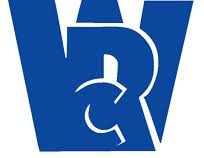What is the Worker Rights Consortium?
 Long before global corporations chasing low wages started outsourcing production of car parts, televisions and smartphones to the global South, the garment industry had paved the way. But a growing awareness that workers in these factories were exposed to hazardous chemicals and unguarded machinery, paid poverty wages, and suffered retaliation or even imprisonment when they tried to organize in unions, led consumers to demand action from the global brands sitting atop of the supply chains. They wanted to know that their jeans, shirts and shoes weren’t being produced in sweatshops.
Long before global corporations chasing low wages started outsourcing production of car parts, televisions and smartphones to the global South, the garment industry had paved the way. But a growing awareness that workers in these factories were exposed to hazardous chemicals and unguarded machinery, paid poverty wages, and suffered retaliation or even imprisonment when they tried to organize in unions, led consumers to demand action from the global brands sitting atop of the supply chains. They wanted to know that their jeans, shirts and shoes weren’t being produced in sweatshops.
In 2000, a group of universities, student groups, and labor activists formed the Worker Rights Consortium to make sure workers who cut, stitched and assembled college-logo gear were treated fairly. The WRC drafted a code of conduct for suppliers and conducts inspections and production facilities to monitor compliance. The affiliated schools demand that the multinational corporations receiving a license to produce gear bearing the college name ensure that the code of conduct is followed. Today, the WRC reports nearly 200 members, including many familiar names in Catholic higher education: Georgetown, Fordham, Villanova, Duquesne, Boston College, Gonzaga, Loyola University Chicago, Xavier University, Creighton, and many others.
Reports of serious labor abuses at Hansae, a Nike supplier in Vietnam, have circulated for years. The company is stonewalling WRC monitors, and Nike is refusing to intervene. Nike’s license to produce Georgetown gear expires at the end of 2016, and the university says it will not be renewed unless the global firm and its suppliers comply with WRC inspections.
